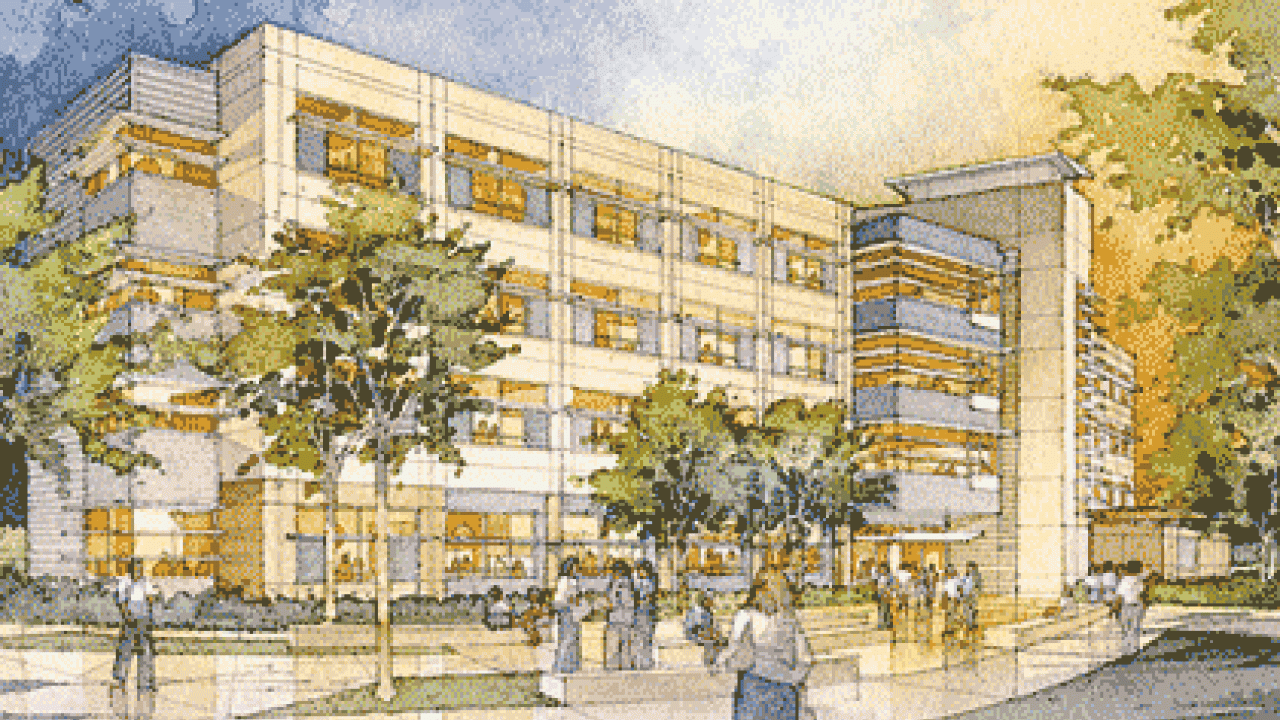A ceremonial groundbreaking was held today at the University of California, Davis, School of Veterinary Medicine for a new four-story, 76,000-square-foot research building that will be dedicated to protecting and improving the health of animals, people and the environment.
The $58.5 million facility is the capstone for the first phase of the veterinary school’s ambitious $354 million building program. The new building, initially to be known as Veterinary Medicine Research Facility 3B, is being constructed in the campus’s health sciences district, northeast of the William R. Pritchard Veterinary Medical Teaching Hospital.
“When complete in December 2012, Veterinary Medicine 3B will provide modern, innovative research facilities and a platform for the School of Veterinary Medicine to continue rising to even greater heights,” said UC Davis Chancellor Linda P.B. Katehi.
She noted that the new facility will help unite students, researchers and clinical faculty in one location, ending a 40-year separation that required travel between the core campus and the school’s teaching hospital and nearby laboratories.
“The location and design of Vet Med 3B will enhance student education and promote research collaboration and discovery,” said Bennie Osburn, dean of the School of Veterinary Medicine. “Animals, humans and the environment will benefit from the work to be accomplished here.”
About the building
The new building will bring together 50 faculty members in more than two dozen disciplines and nearly 40 student-faculty research teams, as well as laboratory and support staff. It will provide laboratories where researchers will explore a variety of animal-health issues such as environmental pollution; food safety; public health; and infectious diseases, including those that can be passed between animals and humans. It also will house Veterinary Medicine Extension specialists, food-safety monitoring and diagnostic systems, and biosecurity programs.
The building will include two main wings, built of light earth-tone concrete with silver-gray aluminum windows and light-filtering sunscreens. The ends of the wings will be capped with vertical towers of silver-gray metal panels, and a glass-and-concrete stair tower will be located adjacent to the southern entrance.
The building has been designed to meet LEED Gold environmental standards, as specified by the U.S. Green Building Council. (LEED stands for Leadership in Energy and Environmental Design.)
State and campus sources are providing $50.8 million to construct the building. Private donors are contributing an additional $12 million, including $7.7 million to help construct the new building and $4.3 million to equip and furnish it.
This is the eighth and final building to be constructed as part of Phase 1 of the veterinary school’s $354 million building and facilities program, launched in May 2000. Seven of those buildings are at UC Davis and one is at the school’s Veterinary Medicine Teaching and Research Center in Tulare. The school’s future building efforts will focus on updating and expanding facilities for the veterinary medical teaching hospital and constructing an additional building near the teaching hospital to further consolidate research programs.
About the School of Veterinary Medicine
The UC Davis School of Veterinary Medicine, established in 1948, consistently ranks among the top veterinary schools in the nation. Its teaching, research and public service programs benefit animal, public and environmental health throughout California and beyond.
The veterinary school focuses on the health of all animals, including livestock, poultry, companion animals, captive and free-ranging wildlife, exotic animals, birds, aquatic mammals and fish, and animals used in biological and medical research. The school’s 300 faculty members work with more than 700 students, including more than 500 who are pursuing Doctor of Veterinary Medicine degrees. Through its veterinary teaching hospital, the school also provides advanced training for 100 veterinary residents in 25 specialties.
Media Resources
Pat Bailey, Research news (emphasis: agricultural and nutritional sciences, and veterinary medicine), 530-219-9640, pjbailey@ucdavis.edu
Lynn Narlesky, Veterinary Medicine dean's office, (530) 752-5257, lnarlesky@ucdavias.edu
